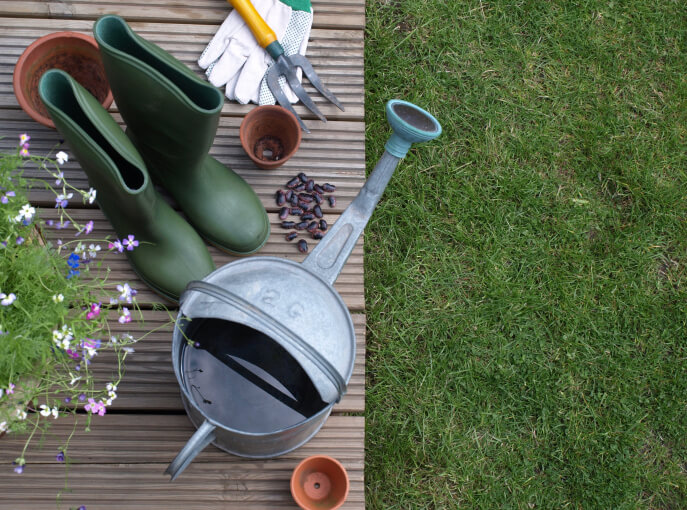
Landscaping: 12 Terms to Know
Landscaping is an extremely diverse field with a rich assortment of insider terms. Let’s take a quick look at 12 concepts you might encounter when you’re talking to your landscaper.
- Drain field – Installed on larger properties where a combination of underground pipes and surface swales are configured to gather runoff from the primary living spaces and redirect it to a peripheral location.
- Grade – The existing or intended slope of the land. Grading describes the process of removing or moving soil to alter the slope or topography to improve drainage, prevent runoff or enhance the landscape design.
- Hardscape – Any permanent, non-plant-based element added to the landscape to enhance appearance, solve or prevent problems or complement specific features. Hardscaping includes gravel, paving stones, walkways, patios, terraces, retaining walls, installed irrigation systems, fountains, pools and similar components.
- Impermeable surface – Treatments such as concrete or paving that block water penetration. Some communities restrict the ratio of impermeable surfaces permitted in residential landscapes based on the lot size and location.
- Knit – Describes root systems that are firmly attached to the soil. It takes roughly two to three weeks for the roots of recently installed sod or groundcovers to settle into the new location and attach or “knit” with the soil.
- Permeable surface – Treatments that allow water to penetrate. Common examples include grassy lawns, plant beds and mulched areas. Some communities require homeowners to devote a defined ratio of the landscape to permeable surfaces based on lot size and location.
- Slope – The difference in height between two identified points. It’s usually noted as a ratio (1:5), which means the ground drops 1 vertical foot for every 5 feet of horizontal distance.
- Site plan – A dimensionalized drawing or blueprint that identifies the topography of the area, shows existing objects, structures or features, and illustrates the location and dimensions of new elements that will be built or installed.
- Sod – Sheets of turf grass with established root systems and an attached layer of soil, ready to install on a prepared dirt surface to produce a finished lawn in the shortest timeframe.
- Softscape – Plant-based elements featured in the landscape such as bushes, trees, shrubs, plants and flowers. At the broadest level, it encompasses these elements along with the underlying soil and non-permanent surface treatments like mulch.
- Swale – Natural or manmade gullies and low-lying areas where water collects, creating a moist or marshy spot. Swales are a popular, low-tech means for capturing rainwater runoff, so it percolates through the soil and returns to the aquifer.
- Zone – Describes the specific plant hardiness zone assigned to each region of the country by the US Department of Agriculture. There are now 13 hardiness zones, which determine what types of plants are most likely to thrive in each region.